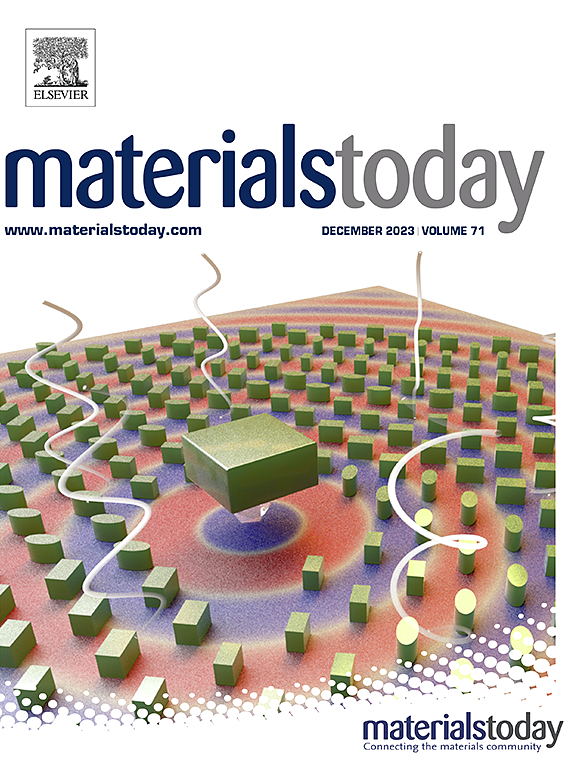二维纳米流体膜渗透能转换离子输运的优化研究
IF 21.1
1区 材料科学
Q1 MATERIALS SCIENCE, MULTIDISCIPLINARY
引用次数: 0
摘要
渗透能是一种很有前途的可再生能源,它是由海水和河水之间的盐度梯度驱动的选择性离子传输产生的。选择性和超快离子输运是渗透能量转换非常需要的。由于可设计的纳米通道具有惊人的多样性,二维纳米流体膜可以精确调节离子传输以优化渗透能转换,为渗透能转换开辟了新的途径。在此,我们总结了优化二维纳米流体膜内离子传输以提高渗透能转换的策略。首先,我们介绍了离子在二维纳米流体膜内的传输途径和机制。随后,我们研究了改善离子传输的不同策略,以优化二维纳米流体膜。在此基础上,讨论了渗透能的应用及其与其他技术的结合。最后,我们概述了渗透能转换发展的障碍,并对未来的应用提出了一些展望。本文章由计算机程序翻译,如有差异,请以英文原文为准。

Optimization of ion transport in two-dimensional nanofluidic membranes for osmotic energy conversion
Osmotic energy, a promising renewable energy source, is generated by selective ion transport driven by the salinity gradient between seawater and river water. Selective and ultrafast ion transport is highly desirable for osmotic energy conversion. Due to the amazing diversity of designable nanochannels, two-dimensional (2D) nanofluidic membranes can precisely regulate ion transport to optimize osmotic energy conversion, opening up new avenues for osmotic energy conversion. Here, we summarize the strategies to optimize ion transport within 2D nanofluidic membranes to enhance osmotic energy conversion. Firstly, we introduce ion transport pathways and mechanisms within 2D nanofluidic membranes. Subsequently, we survey different strategies to improve ion transport for optimizing 2D nanofluidic membranes. Following this, we discuss the applications of osmotic energy and its integration with other technologies. Finally, we outline the obstacles to the development of osmotic energy conversion and propose some perspectives for future applications.
求助全文
通过发布文献求助,成功后即可免费获取论文全文。
去求助
来源期刊

Materials Today
工程技术-材料科学:综合
CiteScore
36.30
自引率
1.20%
发文量
237
审稿时长
23 days
期刊介绍:
Materials Today is the leading journal in the Materials Today family, focusing on the latest and most impactful work in the materials science community. With a reputation for excellence in news and reviews, the journal has now expanded its coverage to include original research and aims to be at the forefront of the field.
We welcome comprehensive articles, short communications, and review articles from established leaders in the rapidly evolving fields of materials science and related disciplines. We strive to provide authors with rigorous peer review, fast publication, and maximum exposure for their work. While we only accept the most significant manuscripts, our speedy evaluation process ensures that there are no unnecessary publication delays.
 求助内容:
求助内容: 应助结果提醒方式:
应助结果提醒方式:


